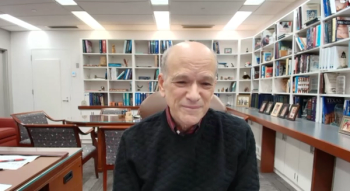
- Psychiatric Times Vol 27 No 2
- Volume 27
- Issue 2
Antipsychotic Prescribing in Children: What We Know-What We Need to Know
A pair of recent research articles has cast the public spotlight on treating schizophrenia in youths with antipsychotic medications.
A pair of recent research articles has cast the public spotlight on treating children and adolescents with antipsychotic medications.1,2
The prospect of large numbers of youth receiving potentially weight-inducing antipsychotic medications for clinical diagnoses that have only scant empirical support of clinical efficacy understandably raises critical concern. How often do the known cardiometabolic risks outweigh uncertain clinical benefits? This question becomes especially pointed when it involves low income and minority children-vulnerable groups already at high risk for obesity and its metabolic complications. The new findings are likely to fuel fresh concerns over drug safety and raise new worries over indiscriminate antipsychotic medication use in young people. If taken out of context, the findings could tarnish the image of child psychiatric services and further restrict appropriate mental health seeking behavior by concerned parents for their children. Before jumping to conclusions, however, it is important to consider what we know and what we do not know about antipsychotic prescribing to young people.
Over the last decade, the clinical targets of antipsychotic medications for children and adolescents have broadened. What had been a relatively narrow focus on psychotic symptoms in rare early onset psychotic disorders and irritability in pervasive developmental disorders has grown to include aggressive behaviors and mood dysregulation that occurs in a wide range of child and adolescent psychiatric disorders and sometimes in otherwise normal youth. Aggressive behavior, in particular, is a common and clinically heterogeneous feature of the disorders that have seen the largest increases in antipsychotic medication treatment of children, including bipolar disorder and disruptive behavior disorders. Yet the potential dangers of not treating these symptoms, especially when they occur in more severe forms, have not been well quantified.
A consideration of antipsychotic treatment of young people inevitably leads to a consideration of treatment alternatives. Unfortunately, we know little about the availability of evidence-based psychosocial treatments5 such as cognitive behavioral therapy with a focus on anger management or mood regulation. If, as I suspect, these psychosocial interventions are rarely accessible to children and adolescents in need, then strong policy and educational reforms are required to help make these treatments more widely available.
The public too often tends to link all psychotropic medication prescribing with the practice of psychiatry. The reality, of course, is that non-psychiatrist physicians prescribe most of the psychotropic medication treatment in the United States. For antidepressants-the most common class of psychotropic medication-only about 20% of treated patients are cared for psychiatrists.6 We lack an understanding of the respective roles of psychiatrists and other physicians in the antipsychotic treatment of children and adolescents. More specifically, little is known about how the clinical characteristics of young people treated with antipsychotic medications vary by the specialty of their treating physician. In addition to learning more about the clinical symptom targets of antipsychotic use in clinical practice, attention should be devoted to describing and improving routine clinical assessments. To what extent do children and adolescents who are prescribed antipsychotic medications receive thorough and developmentally-sensitive mental health assessments and evaluations of their home environments?
Strong evidence that several widely prescribed antipsychotic medications result in rapid and substantial weight gain in young people should increase attention devoted to clinical assessment, patient selection, and metabolic status monitoring. It is hoped that the public interest that has been raised by the recent reports will invigorate efforts to improve our understanding of the appropriate role of antipsychotic medications in treating childhood and adolescent psychiatric disorders while spurring efforts to increase access to evidence-based psychosocial treatments.
References
1. Wilson D. Weight gain associated with antipsychotic drugs. New York Times. October 28, 2009. http://www.nytimes.com/2009/10/28/business/28psych.html. Accessed December 28, 2009.
2. Wilson D. Poor children likelier to get antipsychotics. New York Times. December 11, 2009. http://www.nytimes.com/2009/12/12/health/12medicaid.html. Accessed December 28, 2009.
3. Correll CU, Manu P, Olshanskiy V, et al. Cardiometabolic risk of second-generation antipsychotic medications during first-time use in children and adolescents [published correction appears in JAMA. 2009;302:2322]. JAMA. 2009;302:1765-1773.
4. Crystal SC, Olfson M, Huang C, et al. Broadened use of atypical antipsychotic drugs: safety, effectiveness, and policy challenges. Health Affairs. 2009;28:770-781.
5. Weissman MM, Verdeli H, Gameroff MJ, et al. National survey of psychotherapy training in psychiatry, psychology, and social work. Arch Gen Psychiatry. 2006;63:925-934.
6. Olfson M, Marcus SC. National patterns in antidepressant medication treatment. Arch Gen Psychiatry. 2009;66:848-856.
Articles in this issue
almost 16 years ago
Dementia: A Focused Reviewalmost 16 years ago
An Unusual Side Effectalmost 16 years ago
Hopeful Signs of Increased Emphasis on Mental Health Issuesalmost 16 years ago
A New PsychiatricTimes.com: What’s In It for You?almost 16 years ago
New Recommendations for Treatment of Schizophreniaalmost 16 years ago
Focusing on Depression in Expectant and New Fathersalmost 16 years ago
Boundaries and Benefits of Psychotherapyalmost 16 years ago
The Patient-Physician Bondalmost 16 years ago
Analgesics: New This Year to Our ArmamentariumNewsletter
Receive trusted psychiatric news, expert analysis, and clinical insights — subscribe today to support your practice and your patients.

















